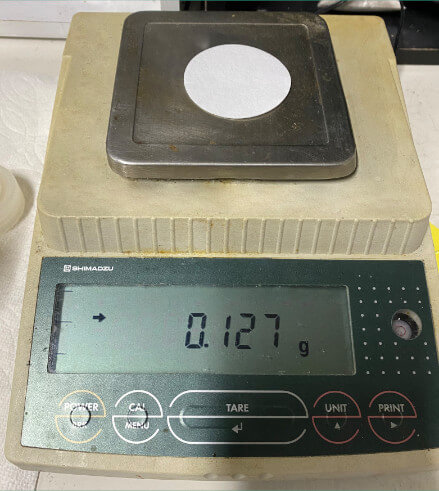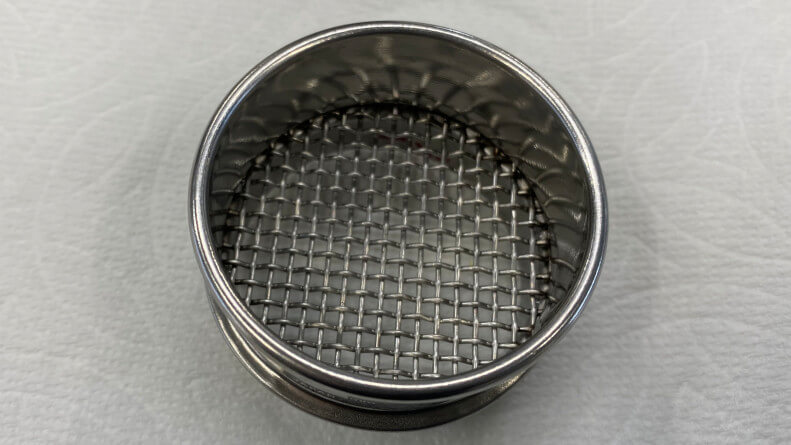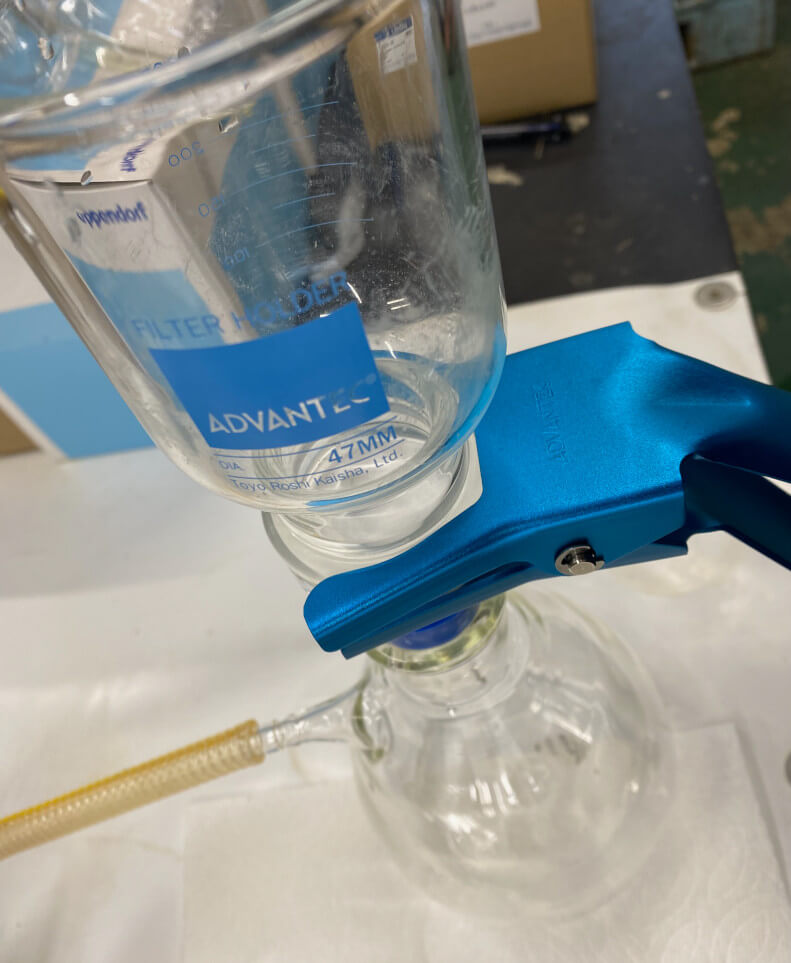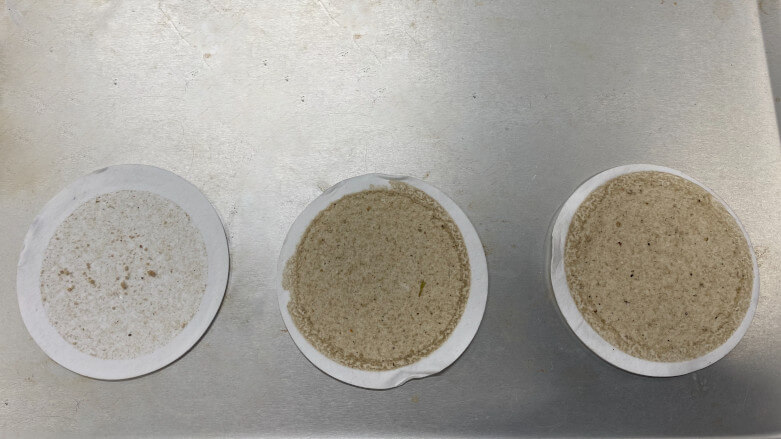Suspended Solids Measurement

This is our laboratory building.

Suspended Solids, which are small dusts (solids remain on a filter with pores diameter of 1μm) contained in 1L of water. They are the turbidity and contamination. Hence, if too much of them are released into rivers and the sea, it can affect the ecosystem by making it difficult for sunlight to reach into the water, or by clogging the gills of fish and reducing the oxygen supply. This is why TSS is one of the most important and fundamental water quality indicators.
Suspended Solids Measurement (Gravimetric Analysis)
- First, weigh the glass fibre filter to be used.
This glass fibre filter has resin binder, so does not need to be washed. - Filter the water with a 2 mm sieve.
In Japan, suspended solids are defined as anything less than 2mm, so larger dust particles are removed here. However, we rarely catch such big dusts. - Set the glass fibre filter on the filtration device and filter the water using a vacuum pump.
Any solids that may have adhered to the container used are washed off with tap water at the end of the filtration process. - Remove the filter and place in a laboratory oven set at 105°C-110°C for 2 hours.
- Leave it to cool in a desiccator and weigh.
Subtract the weight of the filter and calculate the TSS from the volume (ml) of the water used.




SS : Suspended Solids (mg/l)
a : the filter weight after dried(mg)
b : the filter weight before used(mg)
V : the amount of water used(ml)
This is how to determine Suspended Solids with traditional gravimetric analysis.
We would like to show you how to measure other items in water quality testing as well in this blog.
Internal Links for Water Analysis
- COD (Chemical Oxygen Demand) https://kendensha.com/blog/cod-chemical-oxygen-demand-measurement
- BOD (Biochemical Oxygen Demand) https://kendensha.com/blog/bod-biochemical-oxygen-demand-measurement


